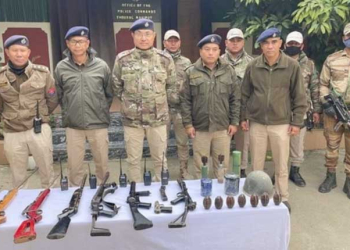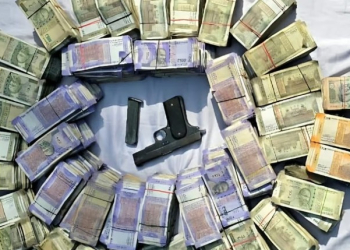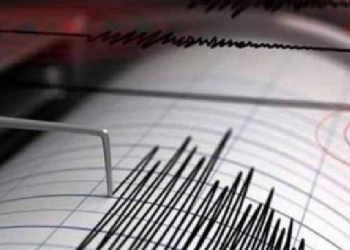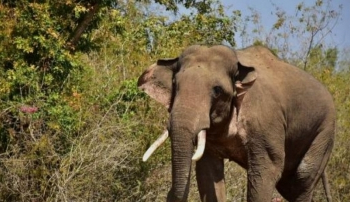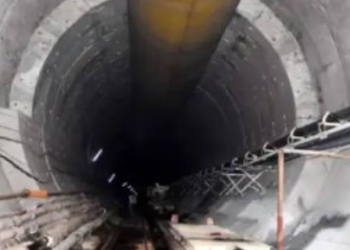Kolkata: In the recently concluded municipal polls, the Trinamool Congress won 102 of the 108 municipalities preceded by the resounding victory in the assembly elections, proclaiming an unquestionable political supremacy in the state. However, the victory in all these elections has been marred by controversies and the ruling party has been accused of political violence.
Take the example of the recently concluded municipality polls where allegations of violence by the ruling party were widespread. At least nine journalists were injured while trying to show the violence allegedly perpetrated by the ruling party. The BJP called a bandh for 12 hours protesting against the violence during the election throughout the state.
Not only the municipal elections, there were allegations of widespread violence across the state after the assembly polls. There was an allegation that the Trinamool Congress after coming to power for the third time unleashed violence against supporters of the BJP. The National Human Rights Commission in its findings not only accused several Trinamool Congress leaders and cabinet ministers for their direct involvement in the violence but mentioned that in the state of West Bengal – ‘There is no rule of law rather it is the law of the rulers’.
Even though the number of cognizable crimes per lakh of population in 18 Indian states is higher than that of West Bengal, the latter has acquired the dubious distinction of recording the highest number of incidents of political violence for quite some time.
According to the latest report of the National Crime Records Bureau, the crime rate — the number of cognizable crimes under IPC per lakh of population — was the highest in Kerala (499.7) in 2019, followed by Haryana (386.4) and Assam (358.9): Bengal stood 19th (162.3). In terms of the number of murders per lakh of population, Jharkhand (4.3), Arunachal Pradesh (4.0) and Haryana (3.9) occupy the first three positions.
Bengal (2.0) ranks 17th. In economic offences, the rank of the state is 15th. In all these headers, Bengal’s crime rate is lower than the national average. As far as crimes against women per lakh of population is concerned, the first three spots have gone to Assam (177.8), Rajasthan (110.4) and Haryana (108.5) with Bengal being 8th (64.0). Crimes against scheduled castes are the lowest in Bengal (excluding the predominantly tribal states).
The above set of data is enough to prove that the law and order situation in West Bengal is far better than many other states of the country but the murders committed due to ‘political reasons’ are the highest in Bengal (12), followed by Bihar and Jharkhand (6 each) and Andhra Pradesh (5). Murder for political reasons is perceived differently when compared to other motives for murder – property or family disputes, personal vendetta, illicit relationship, dowry, insurgency, dacoity, serial killing, honour killing, killing due to religious or caste reasons and so on. When the first kind is thought to be directly linked to the democratic entitlements of the people, the other motives are considered to be related to the criminal instinct of an individual or a mob.
From a historical perspective violence owed its political allegiance during the Naxal period in the seventies when a group of ultra-Left radical extremists resorted to violence to fight against imperialism and capitalism. The mayhem between the Naxals and the ruling Congress in the early seventies led to one of the dirtiest bloodthirsty battles of the century.
The chief minister, Siddhartha Shankar Ray of the Congress Party, instituted strong counter-measures against the Naxalites. The West Bengal police fought back to stop the Naxalites. The house of Somen Mitra, the Congress MLA of Sealdah, was allegedly turned into a torture chamber where Naxals were incarcerated illegally by police and the Congress cadres. CPI(M) cadres were also involved in clashes with the Naxals.
The legacy of political violence was carried on by the Left Front. During the Left Front’s rule in Bengal, the Congress-led United Progressive Alliance at the Centre often talked of the ‘deteriorating law and order’ in the state citing instances of violence rooted in partisan politics. There were allegations that political violence in Bengal is not reflected in police records as the police stations refused to register such complaints.
The narrative did not change when the Bharatiya Janata Party came to power at the Centre and the Trinamool Congress in the state. In order to understand the roots of political violence in Bengal, we need to look into the evolution of grassroot politics in Bengal in the last four decades.
There is another reason why political violence is so rampant in West Bengal and it is rooted in the political and administrative system of the state. It started during the Left Front regime when the red brigade implemented a three-tier panchayati raj system in 1978 and delegated enormous financial and administrative powers to zilla parishads, panchayat samitis and anchal panchayats.
It was unique because the financial and the administrative powers delegated to these grassroot institutions were considerable and the elections were fought right up to the village level on party lines. The decentralization of power transformed rural Bengal in the initial years and set up the base of the popularity of the Left Front that enabled it to rule for the next three decades.
With elections at every level of the social and administrative structure — from a remote village upto state-level — politics and violence to control this power equation became an integral part of the social and administrative mechanism.
The introduction of electronic voting machines enabled political parties to get an idea about how many votes have been polled in a booth and perhaps even who supported them and who didn’t. As a result, political parties started taking ‘remedial’ steps at the booth level. Enhanced ‘booth management’ facilitated bitterness among villagers and, sometimes, within families. One consequence has been the intensification of political violence before or after elections.
(IANS)



